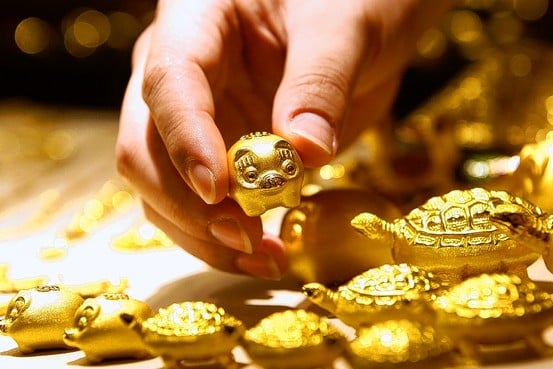The Republic of Korea is an East Asian country that occupies the southern half of the Korean Peninsula and shares a land border with North Korea. The Yellow Sea forms its western border, while the Sea of Japan forms its eastern border. The country has a population of 51 million people. Roughly half of them live in the Seoul Capital Area, the world’s fifth-largest metropolis. The country has a rather rich history and its people have an immense sense of patriotism. Did you know that South Koreans give up their personal gold to help out their country?
South Koreans gave up their gold to help their country. In early 1998, the gold-collection campaign was a national sacrificial movement to repay the country’s debt to the International Monetary Fund. The campaign collected 227 tons of gold worth $2.13 billion.
What Caused the Financial Catastrophe in East Asia?
Thailand’s 13-year-old fixed-exchange-rate system was replaced on July 2, 1997. The price of the Thai baht in the foreign exchange market fell as the exchange rate changed. This was one of the causes of the East Asian financial crisis.
On May 21, that year, the IMF was asked to provide liquidity-adjustment funds. The true cause of the foreign-exchange liquidity problem was debatable at the time. The domestic foreign-exchange market was devoid of dollars and the South Korean won’s exchange rate rose, and some financial institutions were unable to repay their foreign debts.
Foreign borrowing by financial institutions eventually stopped, making the repayment of a $30 billion short-term external debt and a $45 billion long-term external debt difficult. The Kim Dae-Jung government inspired the South Korean people with a gold-collection campaign to pay off the country’s debt to the International Monetary Fund.
It recalls the previous Repay Debt Movement or Korean Production Movement in 1907. A One-Dollar Collection Campaign drew little notice. Beginning on January 6, 1998, the Korean Broadcasting System proposed a gold-gathering movement, which received widespread attention.
(Source: Corporate Finance Institute)
When Did the Campaign Begin, and How Many People Participated?
When the Korean Broadcasting System originally published the plan on December 25, 1997, it was claimed that a statewide gold-collecting drive would be launched. KBS1 launched the Housing Bank campaign on January 5, 1998. Following the KBS story, several media groups developed the campaign. Housing Bank, Nonghyup, Kookmin Bank, Korea Exchange Bank, Saemaeul Bank, and Industrial Bank was among the six banks that received gold. The campaign included two facets: KBS’s love of country and MBC TV’s civic foreign organization’s debt payback.
From January 5 to April 30, 1998, the campaign was in full swing. On January 5, 1998, 3,314 kilograms of gold in 44,748 consignments were received. The number of participants surpassed 500,000 on January 5, more than doubling by January 15. The first KBS campaign ended on January 31, with 1,669,555 participants, and the second campaign ran from February 5 to February 21. The second campaign drew 314,515 participants, who contributed 19,326 kilograms. The MBC-led foreign-debt-repayment campaign, which included consumer and civic organizations, ran from January 12 to March 14. It drew 884,000 people and collected 49,603 kilograms. (Source: Forbes)
